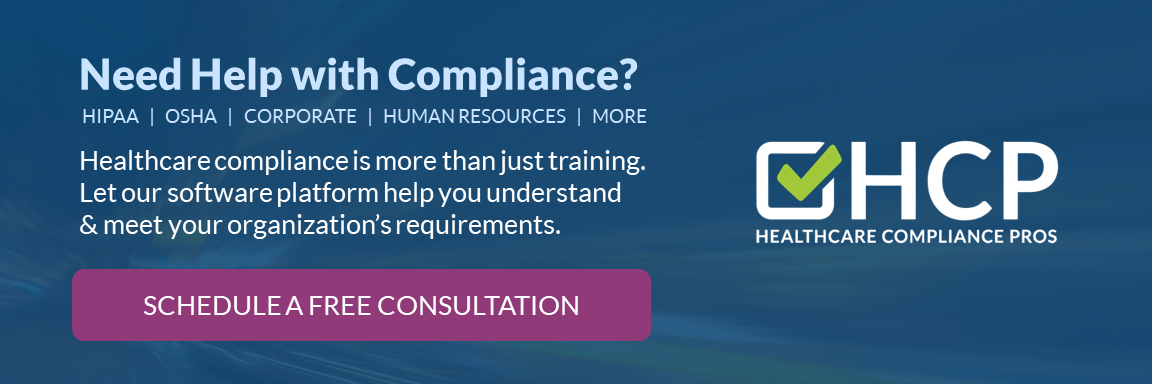Top 10 Essentials of the Final COVID-19 Healthcare Standard
JUMP TO THE SECTION
Federal workplace safety authorities are expected to announce a permanent COVID-19 standard in fall 2022.
The final rule is aimed at the healthcare industry to address COVID-19 exposures. Potential changes are forecasted with critical differences from the previous Emergency Temporary Standard (ETS) mandated by the Occupational Safety and Health Administration (OSHA).
When finalized, the permanent standard will affect a wide range of healthcare employers and employees. Here are the top 10 essentials, expected changes, and other compliance considerations about the end of the Public Health Emergency (PHE).
Summary of the Final Rule
September to October 2022 is OSHA's set timeframe to announce the permanent COVID-19 rule for healthcare. Covered employers are strongly recommended to maintain compliance with the Healthcare ETS until the final rule is provided.
Although OSHA withdrew the ETS last December, federal authorities have broadcasted the finalized rule would become its replacement. Meanwhile, since the extended comment period closed on April 22, 2022, federal authorities have been reviewing those submitted written responses to generate more encompassing provisions. When completed, the permanent standard will be adopted under Section 6(b) of the OSHA Act.
The OSHA Permanent COVID Standard for healthcare could be finalized in fall 2022. OSHA Secretary Doug Parker testified so during a House Workforce Protections Subcommittee Hearing on May 25, 2022. You can skip to Parker's specific mention at the 01:15:26 timestamp.

Top 10 Essentials Preview of the Permanent COVID-19 Standard
While we await a final decision from OSHA, here is an insightful list of potential changes likely being considered for the permanent COVID-19 healthcare standard.
1. Aligning closer with the CDC recommendations:
The agency aims to match the CDC's most up-to-date recommendations on quarantine, infection prevention, and control practices for healthcare with the requirements of the final standard.
2. Increasing flexibility that allows employers to implement required policies:
Instead of detailing exactly how employers must implement the policies and procedures, OSHA may restate provisions to include broader requirements.
3. Removing scope exemptions:
Instead of a finding of grave danger, OSHA will apply a finding of significant risk from exposure to COVID-19. The final standard would require employers to "substantially reduce or eliminate the significant risk of material impairment of health to the extent feasible."
The permanent standard may apply to all healthcare employers regardless of their screening procedures. Originally, the ETS allowed for some employers to forgo provisions if the workplace conducted screening procedures. Actively restricting anyone who may have COVID-19 from entering the facility may not remain an exemption.
4. Tailoring parts of the standard to only cover certain areas:
The agency is focusing on workplaces where "healthcare employees are reasonably expected to encounter people with suspected" or confirmed COVID-19.
5. Defining vaccination status and booster doses:

OSHA may change the verbiage from "fully vaccinated" into "up to date" to describe vaccinations beyond the primary vaccination series according to CDC guidance.
6. Requiring employer-supported program for employee vaccination:
Mandatory vaccination is NOT being considered by OSHA. However, employers may be required to provide paid time off (up to 4 hours) to employees who wish to receive a vaccine. Plus, providing PTO for employees to recover from potential side effects.
7. Easing some COVID-19 precautions for fully vaccinated employees:
OSHA may relax masking, physical distancing, barriers, and notification requirements depending on the number of vaccinated workers in the healthcare setting. A calculated percentage of vaccinated employees could result in relaxed requirements.
8. Triggering requirements based on the level of community transmission:
OSHA may follow the CDC's current guidance for healthcare workers and linking regulatory requirements with measures of local risk.
9. Reducing the record retention period for the COVID-19 log:
Recordkeeping and reporting will likely remain the same. The agency is planning a one-year cap for retaining COVID-19 logs (based on the last entry).
10. Applying the final standard to additional virus strains:
OSHA has indicated that the final standard will apply to future strains of viruses with similar symptoms (including subsequent SARS-CoV-2 virus strains, not just COVID-19 Delta and Omicron).
Supplemental Considerations:

Guidance from the Centers for Disease Control & Prevention (CDC)
On August 19, 2022, the CDC announced relaxed guidance for individual persons. However, healthcare settings do NOT apply. In light of that guidance, the CDC is in the process of reviewing and updating guidance for the following subjects:
- Check out the "Interim Infection Prevention and Control Recommendations for Healthcare Personnel During the COVID-19 Pandemic"
- Examine the "Interim Guidance for Managing Healthcare Personnel with SARS-CoV-2 Infection or Exposure to SARS-CoV-2"
- View the "Ending Isolation and Precautions for People with COVID-19: Interim Guidance"
However, the CDC has stated, "healthcare settings should continue to use community transmission rates and continue to follow CDC's infection prevention and control recommendations for healthcare settings." For more information, explore the CDC's Community Transmission Rates Tracker.

Centers for Medicare & Medicaid Services (CMS) and the PHE
The current Public Health Emergency officially ends on October 13, 2022. On August 18, 2022, CMS advised healthcare providers to prepare for the end of the PHE and, consequently, the end of PHE flexibilities including:
- Emergency authority waivers
- Regulations
- Enforcement discretion
- Sub-regulatory guidance
Healthcare Compliance Pros (HCP) forecasts one more deadline extension. The Biden administration has signaled a commitment to giving states and the healthcare community 60 days notice before ending the PHE. Since October 13th is less than 60 days from this article's initial publication, a PHE extension is plausible.
CMS has advised healthcare providers to establish previous billing practices and safety standards as soon as possible. An established CMS fact sheets may assist with this process.

Final Thoughts & Compliance Resources
"Flexibility" would be the theme for OSHA's upcoming announcement. The agency aims for greater flexibility in applying a permanent standard within the healthcare industry.
Meanwhile, several requirements may only apply when certain metrics indicate an increased risk of COVID-19 exposure. Compared to the ETS, OSHA appears to have increased the number of covered employers, employees, and workplace settings within the final standard.
To evaluate the compliance readiness of your organization for the upcoming final standard or related compliance questions, contact your dedicated team of compliance advisors. Employers and vendors working within healthcare settings are recommended to keep an eye out for OSHA's fall announcement.
Healthcare Compliance Pros will monitor the situation and provide updates as developments occur. Stay informed and educated by subscribing to HCP's Compliance Insider Email Newsletter.
If you are not an HCP client yet, the fastest way to learn how to simplify your healthcare compliance is by scheduling a free online consultation.


